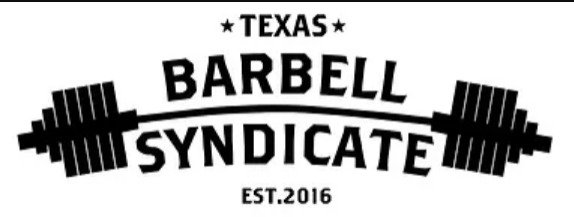We’ve all been there. You have been on the same training cycle for the second time and you’re getting close to the end of your scheduled six weeks. Despite that, you still haven’t seen your lifts go up more than a hair. It’s frustrating, and it’s a grind. There’s gotta be a way to get a little more progress, right?
Right.
I’m going to give some specific examples throughout the article to keep it easy, but the concepts apply to nearly every lift. Here are 5 of my favorite ways to break you out of your training plateau and get you some gains.
ECCENTRIC LOADING
What is it : Eccentric loading, sometimes known as negatives, is the load that occurs on a muscle as it is stretched. Most muscular contractions that we think of are the ones that take place concentrically, where the muscle is shortened. The easiest way to explain it is to use a bicep curl as an example. When the weight is sitting at the shoulder and the elbow is bent, the bicep has very little load on it. As the weight comes down and the elbow straightens out, the bicep is loaded and stretched out at the same time. This is eccentric loading of the bicep. Then as the weight is pulled back up to the shoulder and the elbow is bent again, the bicep is loaded and shortening. This is concentric contraction.
Why do it : The heart of every training program is progressive overload — take your body just a little further than before, let it respond, repeat. Eccentric training of a muscle increases the amount of tension that you can place on a musculotendinous complex. This increases stress, especially on tendons which causes a physiological response from the body. The connective tissues and tendons of the body are sometimes a limiting factor in how much load your muscles can take. Over the course of a careful training program, you can strengthen the tendons and connective tissue around your muscles.
How to apply it : You have two options here, Overload and Tempo change.
Overload — this method is HIGHLY recommended with a training partner / spotter. Load up with 10-20% more than what you can comfortably lift. It should be a weight that is just beyond what you can move on your own. Have your partner help you lift off from the starting position and then use a slow tempo and control the weight to the end of the movement. Once you reach the end of the movement, have your partner help you back to the top of the lift and repeat. When doing overloads, I recommend keeping the rep range below 8 in order to avoid possible injury.
Tempo / Pause - This method is much easier than the overloads to do on your own, but still requires safety guards in order to make it work. Keeping your weight about 10% lighter than what you can normally lift for a full set, lower the weight very slowly, (for example a 6 second descent) and then return it back to starting position at normal speed. I recommend a set up that you can drop easily so you can bail out when you inevitably reach failure. I would also recommend a similar rep range as the overload method, 8 or less.
ALTERNATIVE EXERCISE METHOD
What is it: Here we are working the same muscle group but changing the method you use to apply a load. For example; if you have been doing a straight bar bench press, try doing a dumbbell bench press for one or two cycles instead. Taking it a step further, you can switch up the load by changing grips, tempo, single sided or symmetrical, etc. The goal to keep in mind with this one is to keep your alternatives close to your original movement. You shouldn’t start adding in lightweight shoulder moves if you are working to increase a heavy chest press.
Why do it : Humans are innately lazy beings when it comes to spending energy. Physiologically, we do everything in our power to become more efficient with time and experience. As you get more experienced at a particular lift, there comes a point when you actually use less muscle fiber to get the same work done. This sounds great, and from a standpoint of being able to functionally use the muscle you build, it is great. It is not great however, if you are trying to build muscle. You want to find a way to load the muscle fibers so the body is not able to maximize the efficiency. Additionally, by altering the loading method on a muscle, you are able to potentially work different muscle fibers or more muscle fibers than you were previously. We always want to hit as many muscle fibers as possible to get the tiny breakdowns that lead to healing and growth.
How to apply it : Pay attention to the movement pattern for any given exercise and break it down to its most basic form. The bench press, for example is a forward chest press. Now think about a different way to load the muscle group the same way that ISN’T your normal exercise. Swapping out the straight bar bench for dumbbell alternating single hand presses; using a fat grip on the dumbbell; altering the tempo of your chest press to be a 5 count up and down; superset the dumbbell chest press with explosive pushups… The possibilities for movement are nearly endless. Keep the weight relatively heavy and the repetition range close to what you are already working on.
VOLUME FLUCTUATION
What is it : Volume is usually thrown around somewhat casually to mean how many sets or how many reps per set you are working on. Truthfully though, volume includes your weight as well as the sets and reps. We usually calculate volume as a whole number, so sets x reps x weight = volume. For a person doing a squat workout of 5 sets of 5 with 225 lbs, the calculation looks like this: 5 (sets) x 5 (reps) x 225 lbs (weight) = 5,625 lbs (volume). In order to use this to increase your ability to lift more weight, you either add more sets or more reps without changing the weight. This will inevitably increase the overall volume of your training cycle. More volume lifted = more stress on the muscle = more strength gained when the muscle recovers.
Why do it : Change the volume when you want to increase the strength of a particular lift without adding different exercises or alternatives. It creates a bit of a shock to your system and the new stimulus can be enough to kick start you over the plateau you are stuck on. Additionally, increasing the volume of a training program will inevitably increase the amount of strain placed on the connective tissue around the muscles and joints. This can be extremely helpful when you allow sufficient recovery time, as stronger connective tissue allows you to push your muscles harder.
How to apply it : Take a look at your current training cycle and use the calculation to figure out the total volume per workout or per week for a particular exercise ( reps x sets x weight). Once you have that number, a good starting point is to increase it by 10%. It’s up to you how to get that 10% increase in volume per week, whether you change sets or reps. Rinse and repeat throughout a 4-6 week cycle and watch your gain train come in to the station.
RESTRICTED RANGE OF MOTION TRAINING
What is it : Restricted ROM training uses a shortened range of motion, usually the strongest portion of the range, where you can increase the load. Restricting the range of motion refers to not allowing the weight to go beyond mid-range, keeping the load in the most advantageous position. For example, it means not coming more than halfway down to your chest on the bench press before pushing it back to lock-out.
Why do it : Every movement has end ranges (read : most extended and most contracted position) and a mid-range. Most movements have limitations to strength at the end ranges where the muscles are at a disadvantage. This is either from the muscle being completely stretched out or completely contracted already. When you stay in the mid-range and keep your load heavy, you have the opportunity to further stress your muscle fibers because you can finish the sets and reps that you might otherwise fail if going through full range of motion.
How to apply it : First, to be clear, this is only used to get over a plateau. Half reps don’t count in competition, so training half reps for any other purpose doesn’t make any sense.
When you set up for your lift, set up guards or blocks that are higher than what you would normally use. You should only be able to come down just barely halfway through your rep before the weight is resting on the guards. Perform your sets and reps (volume!) like normal, going through the shortened range of motion. Try not to let the weight rest on the guards too long so you don’t end up stuck.
Side note: This works well with the major lifts, but is a lot harder to do with accessory lifts. Sorry guys, this one isn’t going to be real helpful for building massive bicep curls.
REST
This last point seems like it may be self explanatory, but it is often overlooked. If you aren’t seeing progress from your program, it may be your body’s way of trying to tell you to take a break. This is especially true if you have already tried some of these tweaks before with no results. Training is meant to increase your body’s ability to respond to stress. When you layer on the stress but don’t give your body a chance to improve it’s recovery capacity by resting sufficiently, then you can’t perform at your best.
Two methods I recommend are: increasing your rest volume during the workout, and increasing your rest volume between workouts.
Increasing the rest volume in the workout is simple : start a timer for how long you rest between sets or exercises. Increase the time between sets until you reach a rest period that is long enough to give you a small second wind between sets. This becomes more prevalent when working on your higher percentage sets, like your heavy doubles and triples. I wouldn’t recommend letting the rest period go beyond about 5-7 minutes, you don’t want to start cooling down from the workout.
Increasing the rest between workouts is just that — if you normally take a day in between working the same body part (even with a heavy/light contrast cycle), then take an extra day or two before hitting it again. This might mean that your workout schedule no longer cleanly fits into the week with back squats happening every Friday. If you can get the gains you are looking for though, who cares? Just keep track of your training order and keep an eye on your rest periods.
Dr. Paul Harris holds a Doctor of Chiropractic degree from Texas Chiropractic College and a Master’s of Exercise and Health Sciences from University of Houston Clear Lake. He is the owner of Delta V Chiropractic and Sports Medicine and an avid human movement specialist.




















